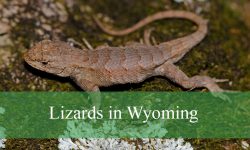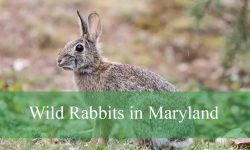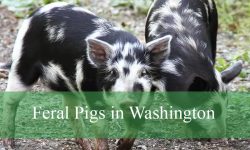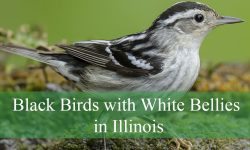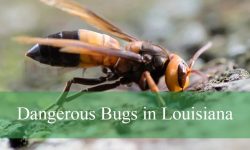Birds in Delaware offer an incredible variety that excites any birdwatcher traveling through the Mid-Atlantic region. From vibrant songbirds to striking waterfowl, the state’s diverse habitats provide perfect homes for many species year-round and seasonally. Exploring coastal marshes, suburban backyards, or wooded parks, Delaware reveals a rich tapestry of feathered life that never fails to captivate.
As a passionate birder who has enjoyed watching birds across many states, I find Delaware’s bird population particularly rewarding. The combination of forest edges, wetlands, open fields, and urban green spaces creates opportunities to spot familiar favorites like the Northern Cardinal and American Robin, alongside fascinating migrants and less common visitors. Each bird holds its own charm, song, and story waiting to be discovered.
In this guide to 30 Common Birds in Delaware, I will share detailed descriptions and identification tips to help you recognize and appreciate these remarkable species. For beginners and seasoned watchers alike, this collection highlights the beauty and diversity of Birds in Delaware, inspiring you to explore and enjoy the vibrant birdlife this small but rich state has to offer.
Different Types of Birds in Delaware
Northern Cardinal (Cardinalis cardinalis)
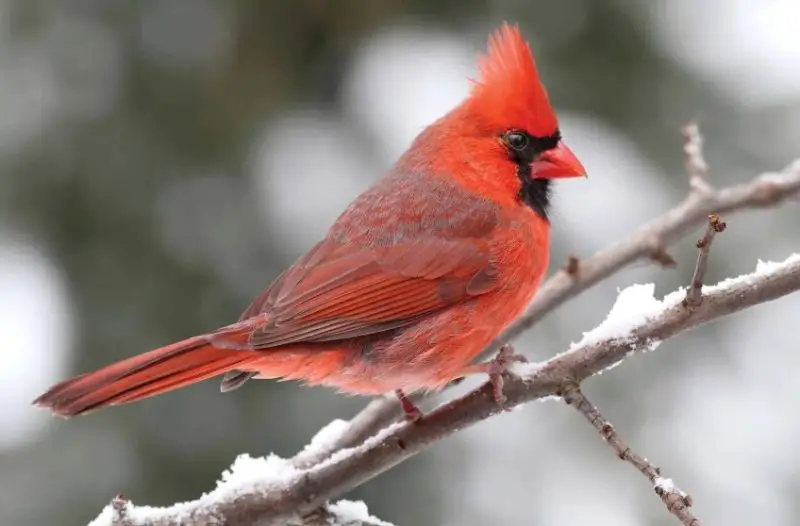
The Northern Cardinal is one of Delaware’s most recognizable songbirds, especially the males with their vivid red plumage and prominent crests. Females are a soft brown with tinges of red on the wings, crest, and tail, offering a more subtle beauty. Both sexes have a distinctive black mask around the face and stout orange-red beaks, which they use to crack seeds.
These birds sing clear, whistled songs that are rich and melodic, often heard at dawn or during territorial disputes. Their calls vary, but the most common is a sharp “chip” sound used to communicate alarm. Northern Cardinals are medium-sized, measuring about 8.3 to 9 inches in length, with a wingspan nearing 10 to 12 inches.
They thrive in Delaware’s suburban neighborhoods, woodland edges, parks, and gardens, especially in areas with dense shrubbery for nesting. They feed on seeds, berries, and insects, frequently visiting feeders stocked with sunflower seeds or safflower. As permanent residents, they can be seen throughout all seasons in the state, brightening winter days with their vibrant color.
American Robin (Turdus migratorius)

American Robins are widespread and familiar birds throughout Delaware, easily identified by their warm orange bellies, grayish-brown backs, and upright stance. They are medium-sized thrushes, about 10 inches long, with a rounded body and long legs. Their clear, fluting song is one of the first signs of spring in the region.
These robins are often seen hopping across lawns in search of earthworms, which they detect by sight and sound. In addition to worms, they consume insects, snails, and a variety of fruits and berries, especially during fall and winter. Their “cheerily, cheer-up” song and soft chuckling call are common during the breeding season.
American Robins prefer open areas such as yards, fields, and forest edges but will also nest in urban parks and gardens. In Delaware, they are year-round residents, although some may migrate southward in colder months. During winter, they often form large flocks that gather in fruit-bearing trees.
Carolina Wren (Thryothorus ludovicianus)
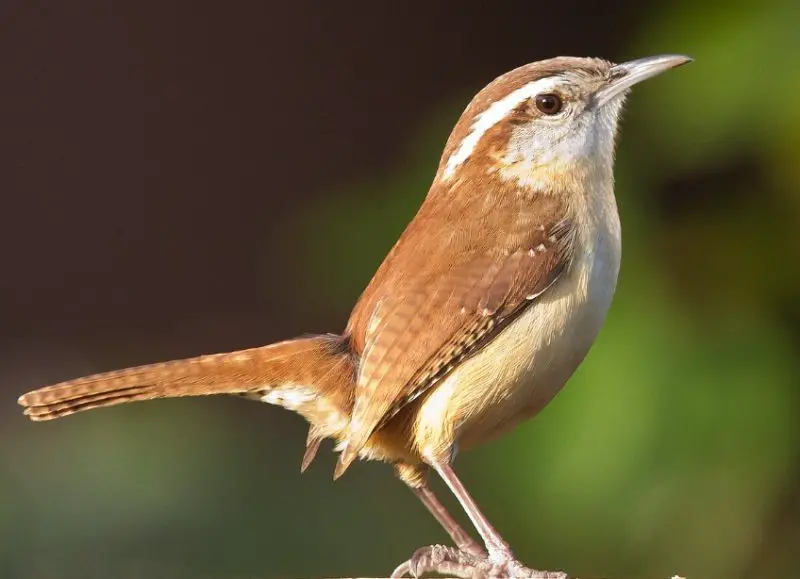
The Carolina Wren is a compact, energetic bird with a rich reddish-brown upper body and creamy underparts. It has a long, slightly curved bill and a bold white eyebrow stripe that helps with identification. Measuring around 5.5 inches, it’s small but notable for its robust song.
This wren has a remarkably loud and varied song, often described as a three-part “tea-kettle, tea-kettle, tea-kettle.” Its call notes include a sharp “chip” or “churr” sound. Despite its size, the Carolina Wren’s voice carries far and is a constant presence in Delaware’s backyards and woods.
Carolina Wrens are non-migratory and reside in Delaware year-round. They inhabit brushy thickets, woodlands, overgrown gardens, and even urban yards. Their diet includes insects, spiders, and occasionally seeds or berries. They are curious birds that often explore sheds or porches and nest in unusual places like hanging flowerpots or mailboxes.
Blue Jay (Cyanocitta cristata)
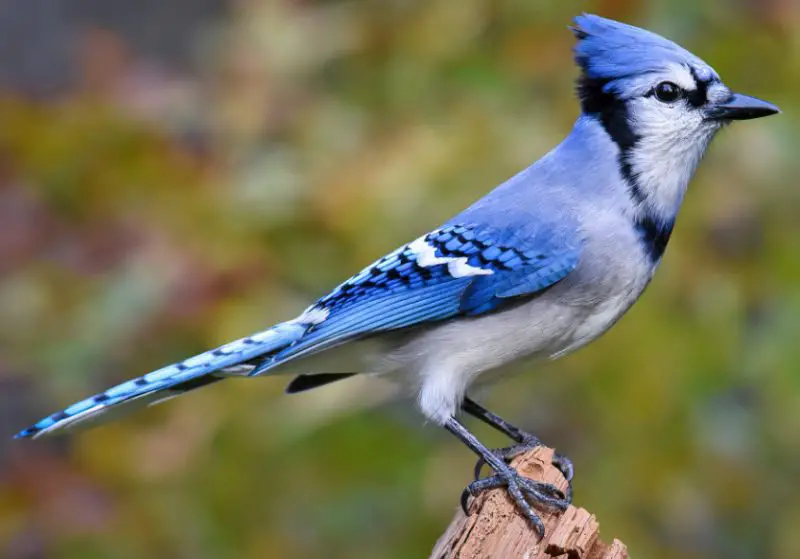
Blue Jays are striking birds with vivid blue upperparts, white faces, and black necklaces encircling their throats. Their loud, jay-jay calls make them easy to locate, and their intelligence and boldness are well-known among bird watchers. They measure about 9 to 12 inches in length, with a wingspan of 13 to 17 inches.
These jays are excellent mimics, often imitating hawk calls to scare other birds away from feeders. They have a wide repertoire of sounds, including whistles, clicks, and harsh cries. Blue Jays are omnivores, feeding on acorns, insects, fruit, and eggs, and are frequent visitors to backyard feeders, especially those offering peanuts and sunflower seeds.
In Delaware, Blue Jays are common in deciduous forests, suburban areas, and parks, often seen flying in family groups. They are year-round residents and can be seen caching food in fall for later consumption. Their presence is most noticeable in autumn when they gather in noisy flocks during their partial migration south.
Red-bellied Woodpecker (Melanerpes carolinus)

Despite the name, the Red-bellied Woodpecker’s most visible trait is the bright red cap that extends from its bill to the nape in males and from crown to nape in females. Its back is barred in black and white, while its pale belly sometimes shows a faint red wash. It measures about 9 to 10.5 inches long, making it a medium-sized woodpecker.
This woodpecker has a loud, rolling “churr” call and a variety of sharp notes. Its drumming, especially in spring, is used to claim territory. In Delaware, it’s commonly seen climbing tree trunks and large branches, searching for insects under bark. It also eats fruit, seeds, and suet, often visiting backyard feeders.
The Red-bellied Woodpecker is a permanent resident of Delaware, favoring mature hardwood forests, parks, and suburban yards with large trees. It adapts well to residential areas and is active throughout the year. Its presence is often signaled by its energetic calls and rapid movement along tree trunks.
Mourning Dove (Zenaida macroura)
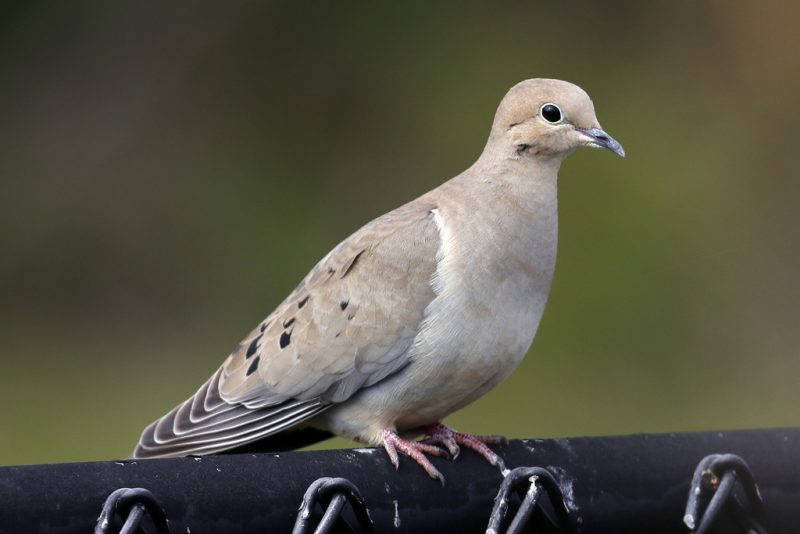
Mourning Doves are slender, medium-sized birds with soft grayish-tan plumage, black wing spots, and long pointed tails edged in white. Their gentle appearance is matched by their plaintive, mournful cooing, which gives the species its name. Measuring about 9 to 13 inches in length, they are often seen perched on wires or foraging on the ground.
In flight, Mourning Doves produce a distinctive whistling sound with their wings, especially noticeable when startled. They typically move in pairs or small flocks and are often found feeding on seeds spilled beneath bird feeders or scattered across farm fields. Their diet consists primarily of grains and seeds, which they swallow and store in their crop before digesting later.
In Delaware, Mourning Doves are abundant in open habitats such as farmlands, suburban lawns, roadsides, and grasslands. They are year-round residents and may nest several times in a single season, often choosing simple platform nests in shrubs or trees. Their calm demeanor and frequent presence make them one of the most recognizable backyard birds in the state.
American Goldfinch (Spinus tristis)
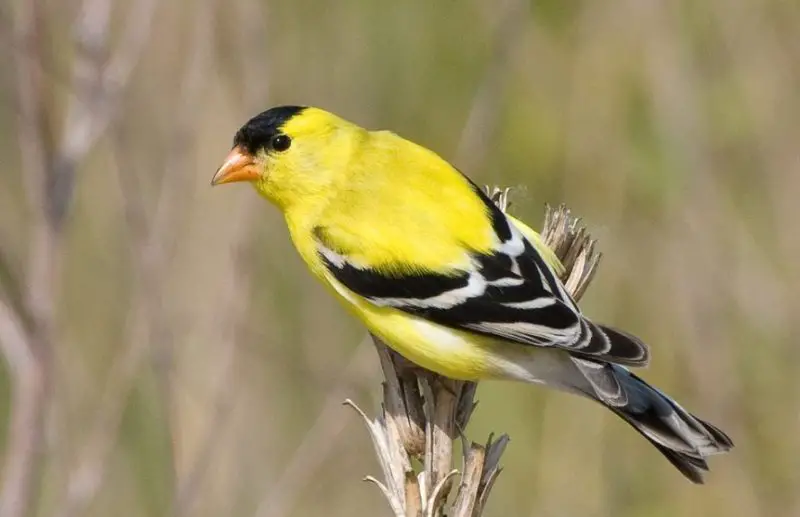
The American Goldfinch is a small, lively bird known for its striking yellow plumage and cheerful song. Males display bright yellow bodies with black wings and caps during summer, while females are more subdued in yellow-olive tones. In winter, both sexes adopt a drab brownish appearance, helping them blend into the landscape.
Their sweet, twittering call and undulating flight pattern are often heard as they bounce through meadows or over fields. These birds are strict vegetarians, feeding on seeds from native plants such as thistles, coneflowers, and sunflowers. They are particularly attracted to nyjer seed feeders and are most numerous during the late summer when seeds are plentiful.
In Delaware, American Goldfinches are widespread in weedy fields, forest edges, and backyard gardens. Though present year-round, their numbers peak during the warmer months, and they delay breeding until midsummer when seed availability is highest. Their cheerful presence and acrobatic feeding habits make them favorites among bird watchers and gardeners alike.
Eastern Bluebird (Sialia sialis)
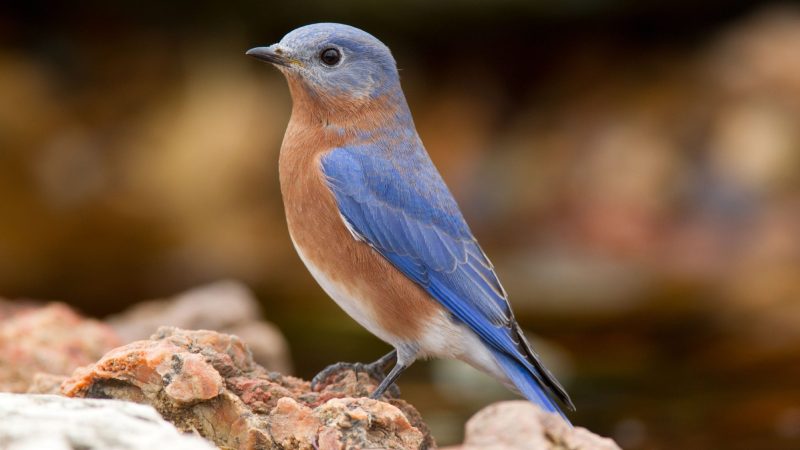
Eastern Bluebirds are small, charming thrushes with vivid royal blue upperparts and warm reddish-orange chests. Females are paler with bluish-gray tones but retain the same elegant shape and posture. These birds measure about 6.5 to 7 inches long and are known for their sweet, warbling songs and soft, chattering calls.
They are cavity nesters, relying on old woodpecker holes or man-made nest boxes placed in open fields or pastures. Their diet includes insects, caterpillars, beetles, and berries, making them valuable allies for natural pest control. Bluebirds often perch on fences or branches, scanning the ground for prey before swooping down.
In Delaware, Eastern Bluebirds are increasingly common thanks to widespread nest box programs and suitable habitat preservation. They prefer open country with scattered trees, such as parks, golf courses, orchards, and pastureland. These birds remain year-round in milder parts of the state, though many migrate short distances during winter.
Downy Woodpecker (Picoides pubescens)

The Downy Woodpecker is the smallest woodpecker species in Delaware, measuring around 5.5 to 6.7 inches in length. It features a black-and-white checkered pattern on its back, a white belly, and a short, chisel-like bill. Males have a small red patch on the back of the head, while females do not.
This woodpecker’s call is a sharp “pik,” and its drumming is rapid and brief. It forages on tree trunks, branches, and even goldenrod stems for insects, larvae, and spiders, and is a frequent visitor to feeders offering suet, sunflower seeds, and peanuts. Downy Woodpeckers are often seen in mixed flocks with chickadees and nuthatches during the colder months.
In Delaware, they are common residents of forests, city parks, orchards, and suburban yards with mature trees. Their adaptability to both wild and human-influenced environments makes them a regular sight throughout the year. Despite their small size, they are bold and active foragers that bring energy to any backyard birdwatching experience.
Osprey (Pandion haliaetus)
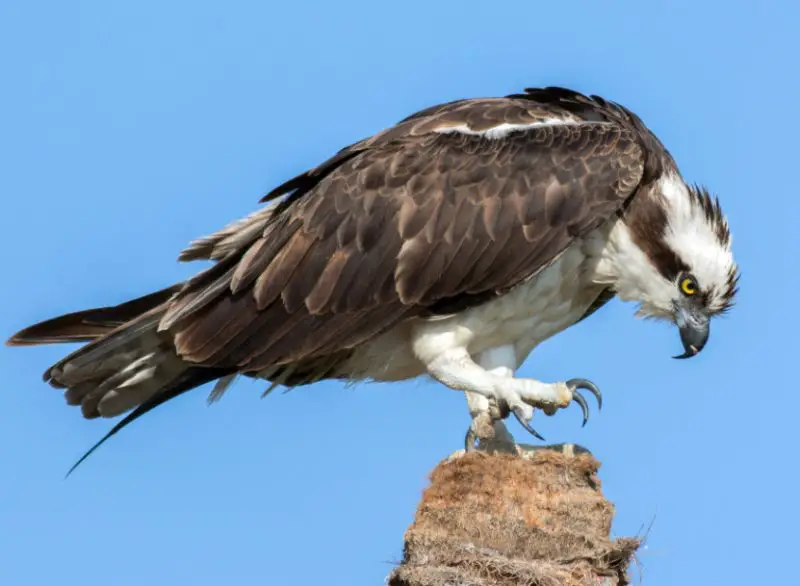
Ospreys are large, fish-eating raptors with dark brown backs, white underparts, and a striking dark eye stripe running across their heads. With wingspans reaching up to 6 feet and bodies about 21 to 24 inches long, they are powerful flyers and divers. Their high-pitched, whistling calls are often heard near water.
These birds specialize in catching live fish, hovering over water before plunging feet-first to seize prey with their strong talons. They have reversible outer toes and barbed foot pads to help grasp slippery fish. Ospreys build large stick nests on tall platforms, utility poles, or channel markers, often reusing the same nest site year after year.
In Delaware, Ospreys are mainly seen from spring through fall along the Delaware Bay, rivers, lakes, and coastal marshes. Once in decline due to pesticide use, their populations have rebounded thanks to conservation efforts and the widespread installation of nesting platforms. Today, they are a visible and inspiring example of successful wildlife restoration in the state.
House Finch (Haemorhous mexicanus)
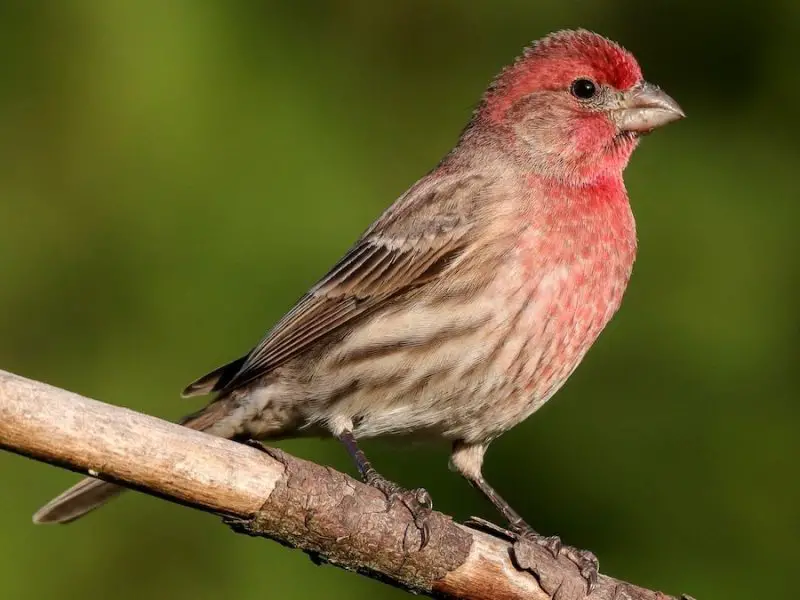
House Finches are small, sturdy songbirds with streaked brown plumage and short, conical beaks. Males are especially recognizable by the rosy red coloring on their faces, throats, and chests, which contrasts with their streaked backs and flanks. Females lack the red and are uniformly brown with distinct streaks down their sides.
Their cheerful warbling songs and varied chirps are common in Delaware’s urban and suburban settings. House Finches are social and often gather in noisy flocks, especially around bird feeders. They feed primarily on seeds, buds, and fruit, with a particular fondness for black oil sunflower seeds and millet.
These finches are year-round residents throughout Delaware, easily spotted in backyards, city parks, and residential areas with ornamental trees and shrubs. They nest in a wide range of man-made and natural cavities, including hanging planters and building ledges. Their adaptability and tolerance of human activity have helped them thrive across the state.
Tufted Titmouse (Baeolophus bicolor)
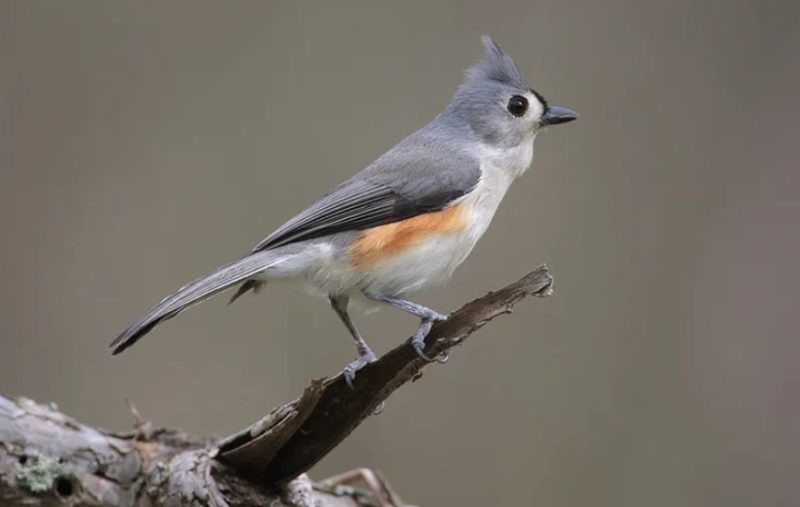
The Tufted Titmouse is a compact, gray bird with a bold black eye and a prominent crest that gives it a distinctive silhouette. Its soft white belly is accented with rusty flanks, and it measures about 5.5 to 6.3 inches long. These birds are energetic and often seen flitting through trees or visiting feeders.
Its familiar “peter-peter-peter” song rings through Delaware’s woodlands and neighborhoods, especially in the morning. Tufted Titmice are curious and active foragers, feeding on insects, seeds, and nuts. They frequently join mixed-species flocks in winter, moving alongside chickadees, woodpeckers, and nuthatches.
In Delaware, they inhabit deciduous forests, wooded suburbs, and mature gardens. They are non-migratory and can be seen throughout the year. Backyard feeders offering sunflower seeds, suet, or peanuts are likely to attract these acrobatic birds, especially if located near trees where they can nest in old cavities.
White-breasted Nuthatch (Sitta carolinensis)

The White-breasted Nuthatch is a compact bird with a blue-gray back, bright white face and underparts, and a slightly upturned bill. Males have a black cap, while females display a softer gray. It is well known for its unique behavior of creeping headfirst down tree trunks while searching for insects.
Its nasal “yank-yank” calls are easily recognizable and commonly heard in wooded areas. White-breasted Nuthatches feed on insects, seeds, and nuts, often storing food in bark crevices for later use. They frequently visit feeders, especially those offering sunflower seeds, suet, or peanuts.
In Delaware, these nuthatches are found in mature deciduous forests, large wooded yards, and parks with old-growth trees. They are permanent residents in the state and often seen in the company of chickadees and titmice during winter. Their distinctive foraging behavior and calls make them easy to spot year-round.
Song Sparrow (Melospiza melodia)
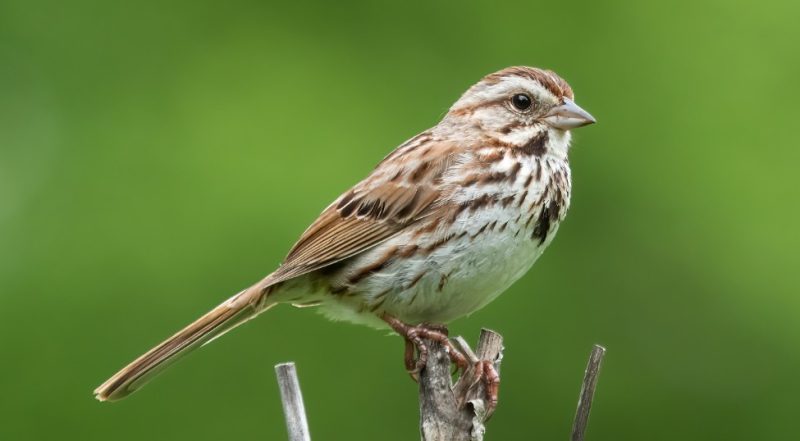
The Song Sparrow is a medium-sized sparrow with brown streaked plumage and a central breast spot. Its plumage varies regionally, but in Delaware, it typically appears gray-brown with bold streaks on the chest and sides. It measures about 5 to 6.5 inches long and has a rounded tail and stout bill.
True to its name, this sparrow is known for its melodious and complex song, often beginning with a few clear notes followed by a rapid trill. Song Sparrows are ground foragers, feeding on insects and seeds, and are frequently observed hopping along the ground near shrubs or tall grass.
In Delaware, Song Sparrows are widespread in wetlands, brushy fields, forest edges, and suburban gardens. Though some individuals migrate, many stay year-round, especially in southern areas. They are most noticeable during the breeding season when males sing persistently from exposed perches.
Common Grackle (Quiscalus quiscula)
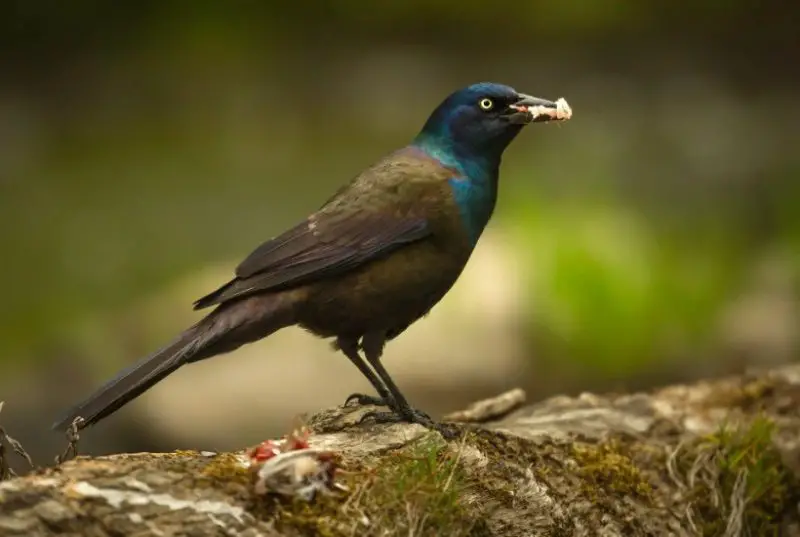
Common Grackles are large, glossy blackbirds with iridescent blue, purple, or green hues depending on the light. Their long tails and piercing yellow eyes give them a striking appearance. Measuring 11 to 13 inches in length, they are larger than many backyard birds and often travel in large flocks.
Their call is a harsh, metallic “squawk” that contrasts with the more melodic songs of other species. Grackles are opportunistic feeders, consuming insects, grains, small animals, and even garbage. They dominate feeders with their size and assertive behavior, often pushing smaller birds aside.
In Delaware, Common Grackles are common in agricultural areas, suburban lawns, wetlands, and forest edges. They breed across the state and are especially conspicuous in spring and summer. Outside the breeding season, they may form large, noisy flocks that roost together in trees or forage in open fields.
Gray Catbird (Dumetella carolinensis)
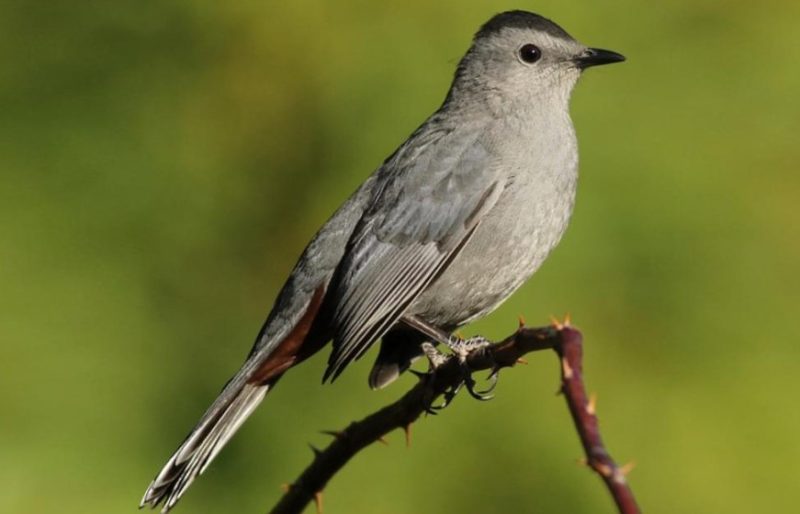
The Gray Catbird is a medium-sized songbird with slate-gray plumage, a long black tail, and a distinctive rusty patch under the tail. It gets its name from the unique “meow” call that closely resembles a cat’s sound. These birds are common in Delaware during spring and summer, often found in dense shrubs, thickets, and hedgerows.
Gray Catbirds are excellent mimics and can imitate the songs and calls of other bird species, incorporating a wide variety of sounds into their own complex songs. Their vocalizations are rich and varied, often including harsh notes and whistles, making their presence known in dense vegetation. They feed on insects, berries, and fruits, foraging mostly in shrubs or low trees.
In Delaware, Gray Catbirds prefer habitats with thick underbrush and are common in suburban gardens, forest edges, and parks. They are territorial during breeding season, often defending their nesting area vigorously. After breeding, they migrate south for the winter but return reliably each spring.
Ruby-throated Hummingbird (Archilochus colubris)
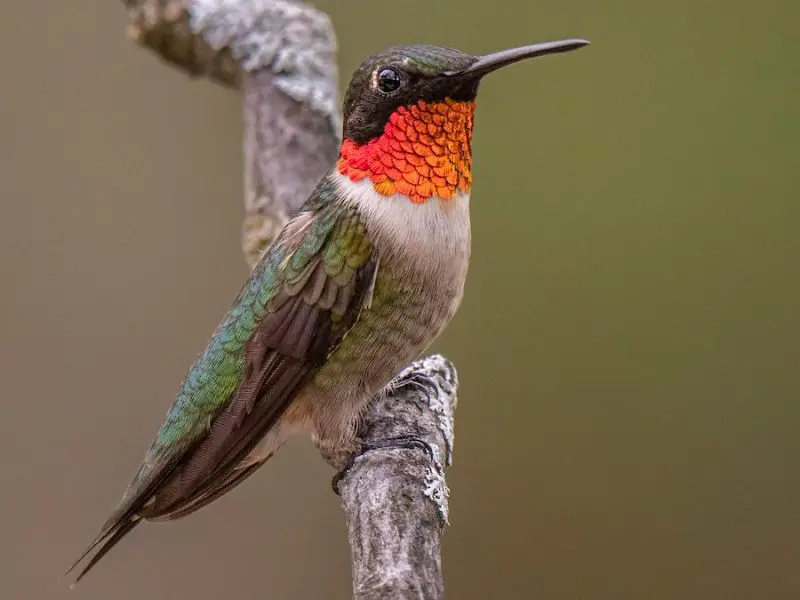
The Ruby-throated Hummingbird is the only species of hummingbird that breeds in the eastern United States, including Delaware. Males are easily identified by their shimmering red throat patch, which flashes brilliantly in sunlight, while females lack the red throat and have a greenish back and white underparts. These tiny birds measure just 3 to 3.5 inches long.
Known for their incredible flying abilities, including hovering and backward flight, Ruby-throated Hummingbirds feed primarily on flower nectar, supplementing their diet with small insects and spiders. Their rapid wing beats create a humming sound, and males often defend feeding territories with aggressive chasing.
In Delaware, they arrive in spring and stay through summer, frequenting gardens, woodlands, and meadows where flowering plants abound. Many backyard bird enthusiasts attract them using specialized nectar feeders. These birds undertake a remarkable migration each fall, crossing the Gulf of Mexico to winter in Central America.
Northern Mockingbird (Mimus polyglottos)
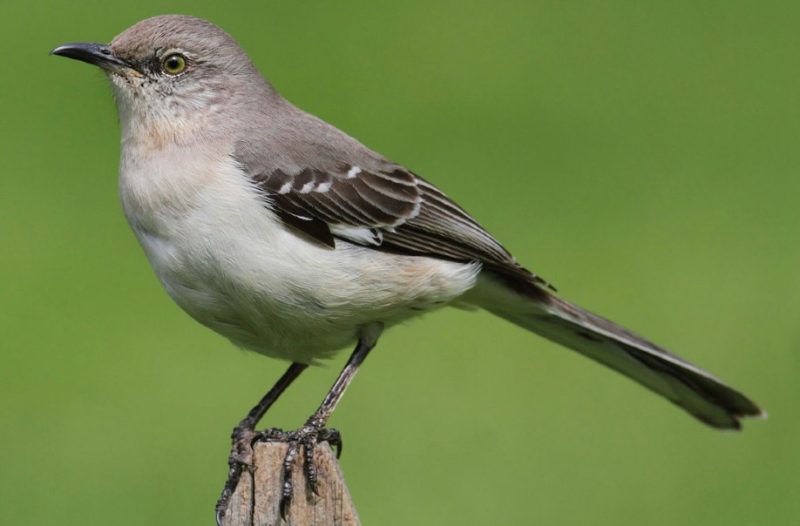
Northern Mockingbirds are medium-sized gray birds known for their remarkable vocal abilities, capable of mimicking more than 200 different bird species and other sounds. They have slender bodies, long tails, and white wing patches visible in flight. Measuring about 9 to 11 inches in length, they are common throughout Delaware year-round.
Their complex songs consist of repeated phrases of varied whistles, trills, and imitations, often delivered from high perches like utility poles or treetops. Males are especially vocal during the breeding season, singing to establish territory and attract mates. Their calls can include mechanical noises and even human-made sounds.
Northern Mockingbirds thrive in diverse habitats, including suburban areas, parks, open woodlands, and farmland. They are territorial and aggressive toward intruders and predators, often seen chasing away larger birds. Their adaptability to urban and rural environments makes them one of Delaware’s most familiar backyard birds.
American Crow (Corvus brachyrhynchos)
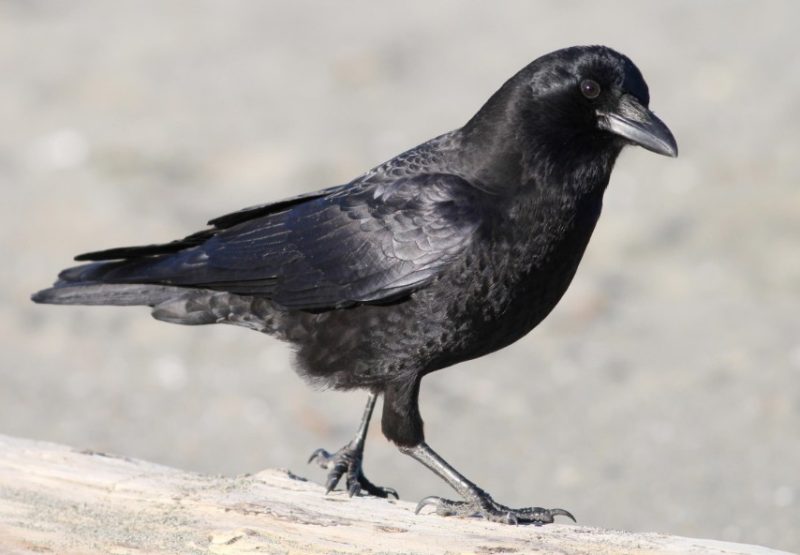
American Crows are large, entirely black birds with glossy feathers and strong, stout bills. Measuring about 16 to 21 inches long, they are highly intelligent and social birds found across Delaware’s urban and rural landscapes. Their cawing calls are loud and varied, serving to communicate within flocks or signal alarm.
These crows are known for advanced problem-solving abilities, tool use, and complex social interactions. They often travel in large groups called murders, cooperating in finding food or defending territory. Their diet is omnivorous, including insects, small animals, seeds, carrion, and human refuse.
In Delaware, American Crows are year-round residents frequenting farmland, forests, city parks, and residential neighborhoods. They are adaptable and thrive in human-altered environments. Their presence is noticeable throughout the day, often gathering in communal roosts at dusk.
Tree Swallow (Tachycineta bicolor)
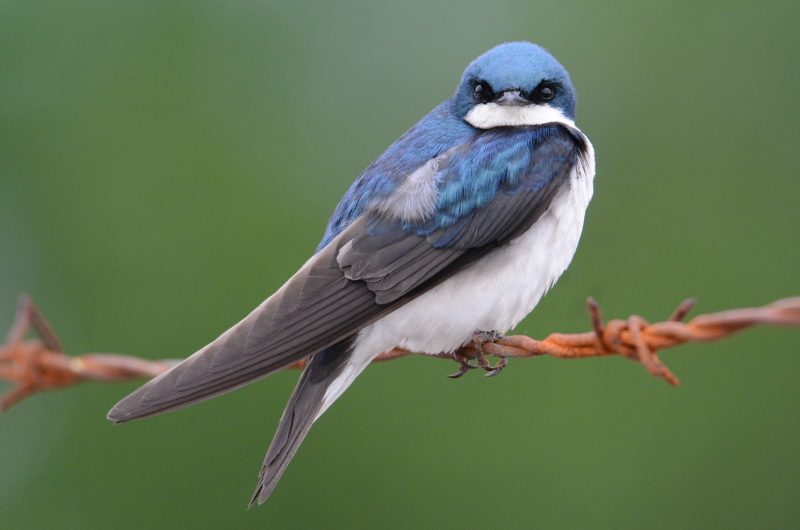
Tree Swallows are small, sleek migratory birds with iridescent blue-green upperparts and bright white underparts. They measure about 5 to 6 inches in length and are agile fliers, often seen swooping and gliding low over ponds, lakes, and wetlands.
These swallows nest in tree cavities or man-made nest boxes, where they lay their pale blue eggs. Their diet consists mainly of flying insects, which they catch on the wing with impressive aerial agility. Their calls include twittering and chirping sounds often heard near water.
In Delaware, Tree Swallows arrive in spring and stay through summer, favoring open wetland habitats, marshes, and water edges. Conservation efforts have increased nesting opportunities through the placement of nest boxes, helping their populations thrive. After breeding, they migrate south to Central and South America for the winter.
Baltimore Oriole (Icterus galbula)

The Baltimore Oriole is a striking summer visitor to Delaware, instantly recognizable by its bright orange body contrasted with bold black wings and head. Males are particularly vibrant, while females and juveniles tend to have paler, more yellowish tones. Measuring about 7 to 8 inches long, these orioles are graceful fliers often seen weaving through tall trees.
Known for their melodic whistles and liquid warbles, Baltimore Orioles fill the air with music during breeding season. Their diet primarily includes fruit, nectar, and insects. They are especially attracted to sliced oranges and grape jelly at backyard feeders, making them a favorite among bird enthusiasts.
These orioles prefer habitats with tall deciduous trees near forest edges, parks, and open woodlands in Delaware. They build intricate hanging nests woven from plant fibers high in tree branches. Baltimore Orioles migrate south in late summer to Central and South America, returning each spring to delight with their vivid plumage and lively songs.
Cedar Waxwing (Bombycilla cedrorum)

Cedar Waxwings are sleek, soft-looking birds with pale brown heads, gray bodies, and subtle yellow undertones on their bellies. Their black eye masks, small crests, and bright red “wax” tips on wing feathers make them unmistakable. They measure about 6 to 7 inches in length and are known for their smooth, flowing flight.
These birds are highly social, often seen in flocks moving through Delaware’s forests and orchards during migration in late fall and winter. Their high-pitched, thin calls accompany their graceful movements as they feed primarily on berries and small fruits, occasionally catching insects on the wing.
Cedar Waxwings are occasional visitors to Delaware, favoring berry-producing trees and shrubs in parks, woodlands, and suburban areas during colder months. Their nomadic behavior depends on food availability, making their presence somewhat irregular but always a delightful sight.
Chipping Sparrow (Spizella passerina)

Chipping Sparrows are small, slender birds with rusty-red caps, gray cheeks, and a distinct black line through the eye. They measure about 5 inches long and display streaked brown backs with pale underparts. Their sharp, trilling songs are among the first signs of spring in Delaware.
These sparrows favor open habitats such as lawns, forest edges, and schoolyards, often foraging on the ground for seeds and insects. Their rapid, dry trill is repeated in long bouts, especially during the breeding season, serving to attract mates and defend territory.
In Delaware, Chipping Sparrows are common spring and summer breeders, often nesting in low shrubs or trees. They migrate southward in fall but return each spring, adding lively trills and bright caps to the state’s birdlife. Their adaptability to urban and suburban environments ensures they are frequently seen near human activity.
Eastern Towhee (Pipilo erythrophthalmus)
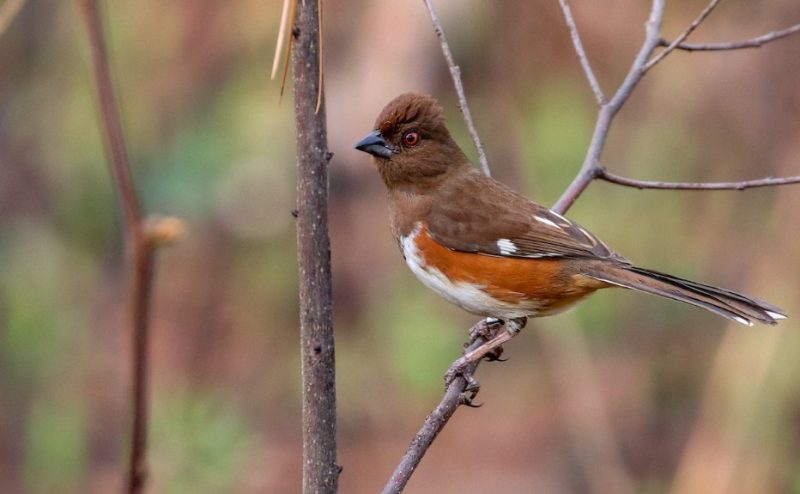
Eastern Towhees are robust sparrows with striking coloration—males have black heads and backs, bright rusty-red sides, and white bellies, while females are similar but with brown instead of black. Measuring about 8 to 10 inches long, they are one of the larger sparrows found in Delaware.
Their distinctive call sounds like “drink-your-tea,” a clear three-part whistle often heard from dense underbrush. Towhees forage by scratching leaf litter vigorously to uncover insects, seeds, and berries. They are often seen on the forest floor or in thick shrubs, moving with a characteristic hop and scratch.
In Delaware, Eastern Towhees are year-round residents, favoring shrubby areas, woodland edges, and overgrown fields. Their preference for dense ground cover makes them less visible but their loud calls and scratching behavior reveal their presence. They play an important role in controlling insect populations and spreading seeds.
Yellow-rumped Warbler (Setophaga coronata)
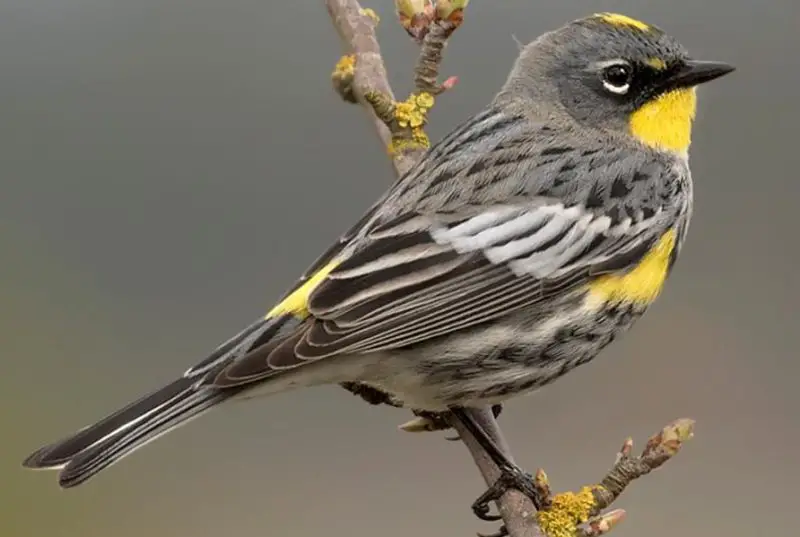
Yellow-rumped Warblers are medium-sized warblers known for their distinctive yellow patches on the rump, sides, and crown. Their grayish bodies are streaked with black and white, giving them a mottled appearance. They measure about 5 to 6 inches long and have a sharp, buzzy song.
These warblers are highly adaptable feeders, consuming insects during warmer months and switching to berries and fruits in fall and winter. Their ability to digest waxy berries allows them to overwinter farther north than many other warblers. Their flight calls are thin, high-pitched chips often heard as they flit through trees.
In Delaware, Yellow-rumped Warblers are common migrants in spring and fall and regular winter visitors. They frequent woodlands, shrubby areas, and parks, often joining mixed flocks with other warblers and sparrows. Their bright yellow patches and bold patterns make them easier to identify than many other warbler species.
Killdeer (Charadrius vociferus)

The Killdeer is a medium-sized plover with distinctive brown and white plumage, characterized by two black breast bands and a striking rusty back. Measuring about 10 to 12 inches long, this bird is often found in open habitats such as bare ground, gravel parking lots, and shorelines. Its name comes from its loud, clear “kill-deer” call, which is easily recognized across Delaware’s open landscapes.
Killdeer are well known for their clever distraction behavior; when a predator approaches their nest, they feign injury by dragging a wing and limping to lure threats away from their vulnerable eggs or chicks. They feed primarily on insects, spiders, and other invertebrates, foraging by sight on bare ground or short grass.
In Delaware, Killdeer are common spring and summer residents, often nesting on gravel rooftops, fields, and shorelines. Their preference for open, disturbed areas makes them a familiar sight in urban and rural environments. They are adaptable and resilient birds that add dynamic behavior to Delaware’s bird community.
Great Egret (Ardea alba)
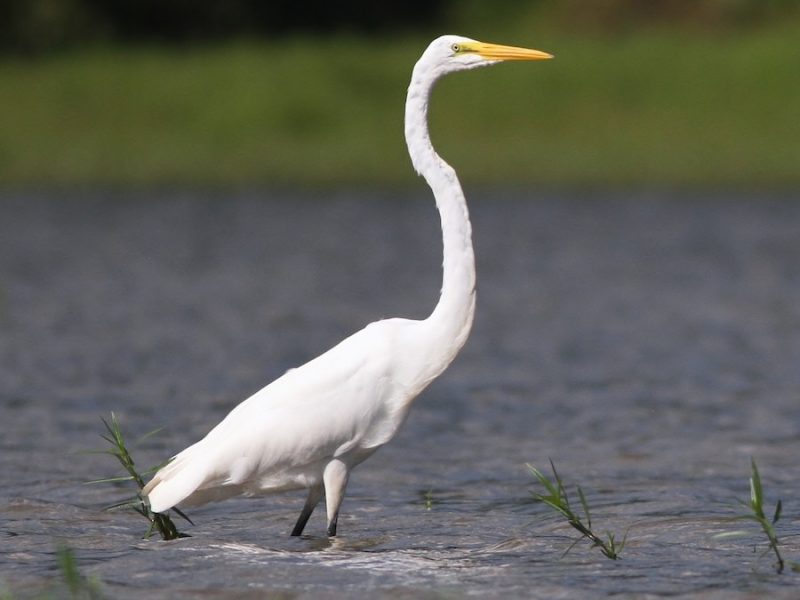
The Great Egret is a tall, elegant water bird with striking all-white plumage, a long S-shaped neck, and sharp yellow bill. Adults stand nearly 3 feet tall with wingspans exceeding 4.5 feet, making them among the largest herons seen in Delaware. Their slow, deliberate movements and graceful posture are often observed while hunting in shallow water.
They feed primarily on fish, frogs, and small aquatic animals, using their long bills to spear or grasp prey in marshes, rivers, and tidal flats. Their loud, harsh croaks can sometimes be heard near breeding colonies. During the breeding season, Great Egrets develop long, delicate plumes on their backs that were historically prized by plume hunters.
In Delaware, Great Egrets frequent wetlands, tidal marshes, and riverbanks from spring through fall. Conservation efforts have helped their populations recover, and they are now a common and celebrated part of the state’s aquatic ecosystems. They often nest in colonies alongside other wading birds, building stick nests high in trees or shrubs.
Double-crested Cormorant (Nannopterum auritum)

Double-crested Cormorants are large, black waterbirds with long necks, hooked bills, and bright orange skin patches near their faces. They measure about 28 to 34 inches long with wingspans up to 4 feet. Their sleek, dark plumage often appears wet and shiny, and they are frequently seen perched with wings spread wide to dry.
These birds dive underwater to catch fish, using their webbed feet and streamlined bodies for swift swimming. They are excellent fishermen, often working alone or in groups to herd schools of fish. Their distinctive behavior of spreading wings to dry is a common sight on Delaware’s bay shores, lakes, and rivers.
In Delaware, Double-crested Cormorants are present from spring through fall, nesting in colonies on islands, cliffs, and large trees near water. They are highly adaptable, often roosting on docks, pilings, or rocks. Their presence is vital in aquatic ecosystems as top fish predators, and they are easily spotted near Delaware Bay and inland water bodies.
Northern Flicker (Colaptes auratus)
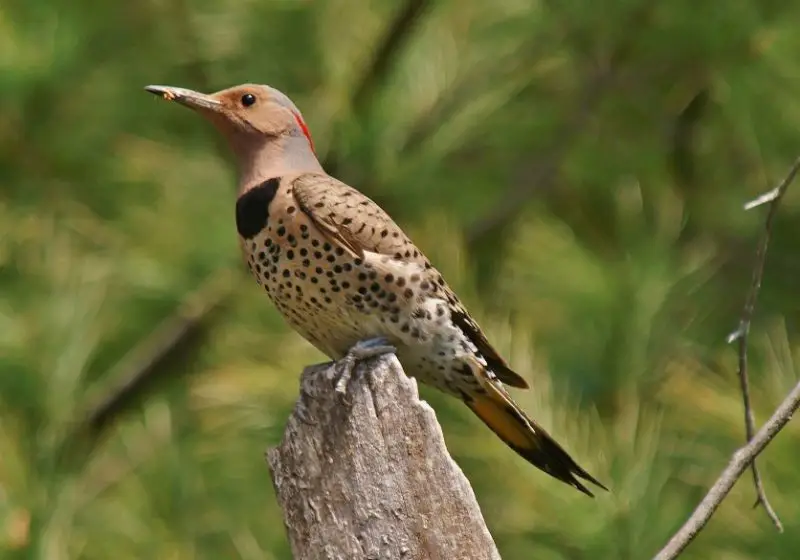
The Northern Flicker is a striking woodpecker species with brown barred backs, spotted underparts, and a black bib. They have a distinctive white rump visible in flight and a bright yellow patch under their wings and tail feathers. Measuring about 11 to 12 inches long, flickers are often seen on the ground more than other woodpeckers.
Unlike many woodpeckers, Northern Flickers primarily feed on ants and beetles found by probing soil and leaf litter. Their loud, rolling call and rapid drumming on trees make them noticeable throughout the year. In Delaware, they are common residents that prefer open woodlands, parks, and suburban yards.
Northern Flickers are adaptable and often nest in tree cavities or nest boxes. Their behavior of foraging on the ground distinguishes them from other woodpeckers in the region. They are seen year-round in Delaware and are appreciated for their vibrant colors and energetic activity.
Pine Warbler (Setophaga pinus)
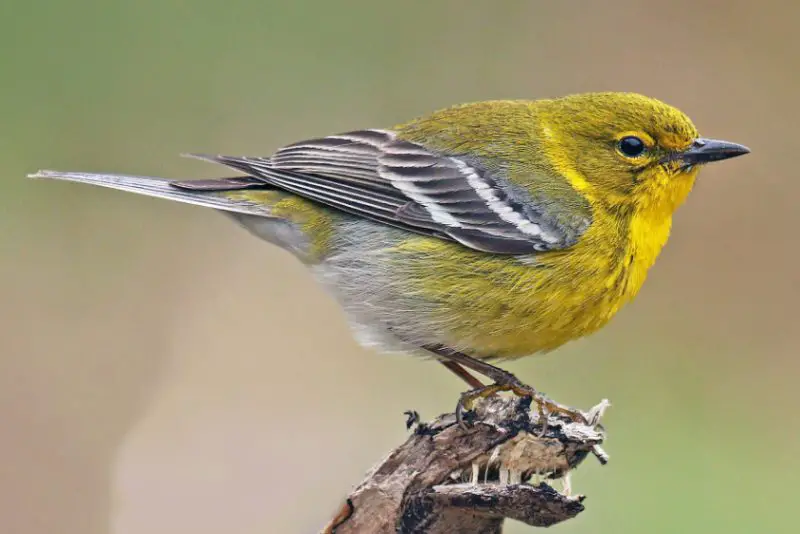
Pine Warblers are small songbirds with olive-yellow upperparts and bright yellow throats and bellies. They have streaked brown backs and a relatively long tail. Measuring about 5 inches long, these warblers are known for their sweet, musical songs often heard in pine forests.
They specialize in foraging among pine needles and bark, feeding on insects, spiders, and pine seeds. Their adaptability to pine habitats allows some individuals to overwinter in Delaware, especially in coastal pine groves where food is more abundant. Their trilling songs are a common spring and summer sound in coniferous woodlands.
In Delaware, Pine Warblers are most commonly found in pine-dominated forests, parks, and plantations. They breed in the state and sometimes remain through winter, making them one of the few warbler species that can be seen year-round locally. Their bright coloration and distinctive habitat preferences make them an exciting species for birders to spot.

